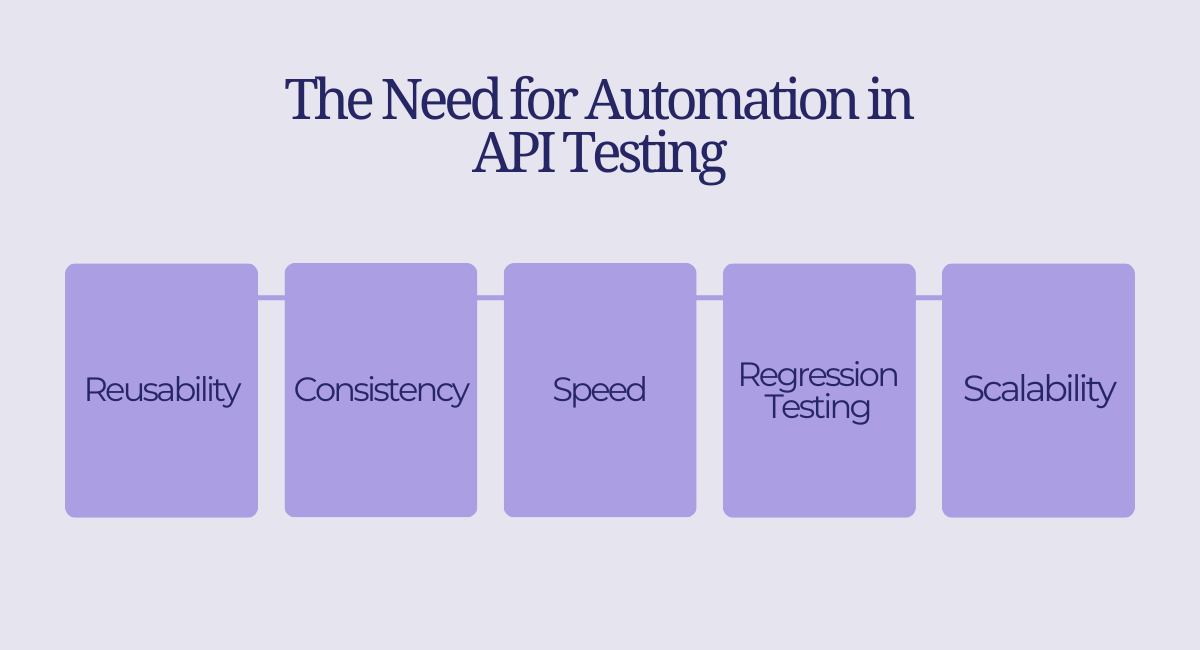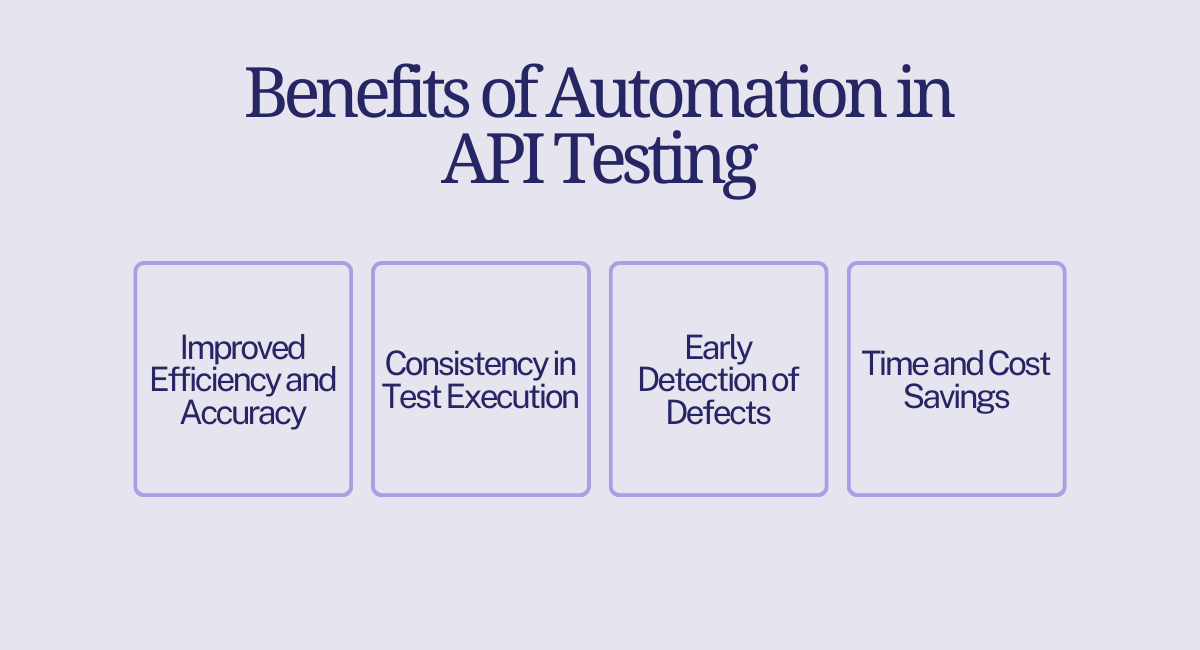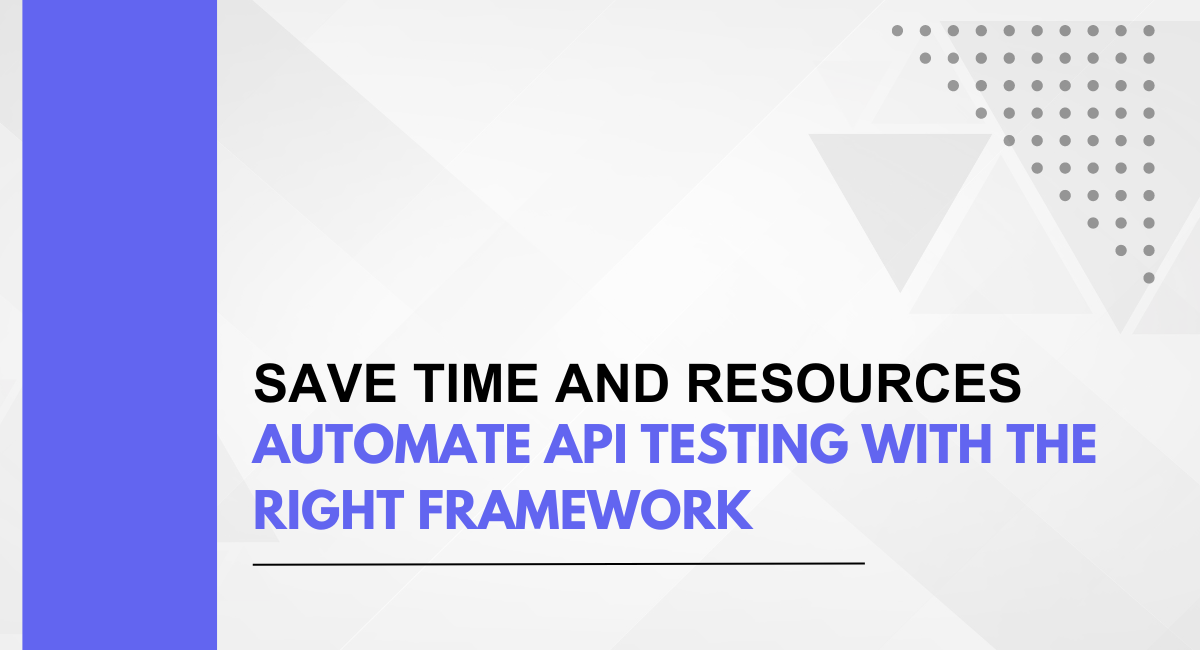API testing plays a crucial role in the software development lifecycle, ensuring that different components of an application can communicate and function as intended. This section provides a brief overview of Automated API testing, highlights its importance in software development, and emphasizes the need for automation in this testing process.
API, or Application Programming Interface, serves as a bridge between different software applications, allowing them to communicate and share data. API testing involves evaluating the functionality, reliability, performance, and security of these interfaces. Unlike traditional user interface testing, API testing focuses on the underlying business logic, data transformations, and communication between software components.
API testing can be categorized into various types, including functional testing, performance testing, security testing, and more. Functional testing ensures that the API functions correctly according to its specifications, while performance testing assesses its responsiveness and scalability under different conditions.
The global Software Quality Assurance market size was valued at $1772.81 million in 2022 and is expected to expand at a CAGR of 14.47% during the forecast period, reaching $3989.57 million by 2028
Importance of Efficient Automated API Testing in Software Development
Efficient API testing is vital in software development for several reasons. First and foremost, it helps identify and rectify issues early in the development process, reducing the likelihood of critical bugs reaching the production stage. By testing APIs thoroughly, developers can ensure the reliability and stability of the entire application.
APIs are often developed independently of the frontend user interface, making them critical for maintaining a separation of concerns in complex software architectures. This separation means that changes to the front end can be made without affecting the backend logic and vice versa.
Effective API testing ensures that this separation remains intact, allowing for more flexible development and maintenance. Furthermore, as modern applications increasingly rely on interconnected services, robust API testing becomes essential to guarantee seamless integration and interoperability between different software components.
The ability to validate the interactions between these components is crucial for delivering a cohesive and functional end product.
The Need for Automation in API Testing

Automation in API testing is essential due to the growing complexity and speed of software development. Manual testing of APIs can be time-consuming, error-prone, and inefficient, especially when dealing with large and intricate systems. Automation brings several advantages to API testing, such as:
- Reusability: Automated tests can be reused across different stages of development and in various environments, saving time and effort.
- Consistency: Automated tests ensure consistent execution and eliminate the variability introduced by manual testing, leading to more reliable results.
- Speed: Automated tests can be executed much faster than manual tests, allowing for quicker feedback during the development process.
- Regression Testing: With frequent code changes, regression testing becomes crucial. Automation enables swift and comprehensive regression testing to catch potential issues introduced by new code.
- Scalability: As software projects scale, the number and complexity of APIs also increase. Automation helps manage the testing process efficiently in such complex scenarios.
Benefits of Automation in API Testing

Automation in API testing offers various advantages that contribute to the overall efficiency, reliability, and cost-effectiveness of the software development process.
Improved Efficiency and Accuracy
- Faster Execution: Automated tests can be run much faster than manual tests, allowing for quicker feedback on the functionality and performance of APIs. This acceleration is particularly beneficial in agile and continuous integration/continuous deployment (CI/CD) environments.
- Parallel Execution: Automation facilitates the simultaneous execution of multiple tests, enabling the testing of different API endpoints or scenarios concurrently. This parallelism speeds up the overall testing process.
- Repeatable Tests: Automated tests can be executed repeatedly with the same inputs and conditions, ensuring consistent and reproducible results. This repeatability is crucial for validating the stability of APIs over time and across different environments.
Consistency in Test Execution
- Uniform Test Environment: Automation ensures that tests are conducted in a controlled and consistent environment. This minimizes the impact of external factors on test results, leading to more accurate assessments of API functionality.
- Standardized Test Cases: Automated tests are defined by scripts, ensuring that each test is executed precisely as intended. This standardization eliminates the variability introduced by human testers, enhancing the reliability of test outcomes.
- Logging and Reporting: Automated testing tools often provide detailed logs and reports, making it easier to trace the test execution process and identify issues. Consistent reporting aids in effective communication among team members and stakeholders.
Early Detection of Defects
- Shift-Left Testing: Automation enables "shift-left" testing practices, where testing is conducted earlier in the development lifecycle. This early testing helps identify defects and issues at an early stage, reducing the cost and effort required for fixing them later in the development process.
- Continuous Integration: Automated API tests can be seamlessly integrated into CI/CD pipelines, allowing for the automatic execution of tests with each code change. This integration facilitates the early detection of defects, ensuring that new code does not adversely affect existing functionality.
Time and Cost Savings
- Resource Optimization: Automated testing reduces the need for manual intervention, freeing up testers to focus on more complex and creative testing tasks. This optimization of resources contributes to overall time and cost savings in the software development lifecycle.
- Regression Testing Efficiency: As software evolves, regression testing becomes essential. Automation allows for swift and comprehensive regression testing, ensuring that changes to the codebase do not introduce unintended side effects.
- Faster Time-to-Market: Automated API testing streamlines the testing process, enabling more rapid identification and resolution of issues. This accelerated testing cycle contributes to a quicker time-to-market for software products.
Executing Automated API Tests
Automated API tests need to be executed efficiently to ensure that the application's functionality and performance are thoroughly validated. This section explores the various aspects of conducting automated API tests, including running individual test cases, batch execution, scheduling, and handling and analyzing test results.
Running Individual Test Cases
- Test Environment Setup: Before running individual test cases, ensure that the testing environment is configured correctly. This includes setting up the necessary infrastructure, data, and dependencies for the tests.
- Isolation of Test Cases: API test cases should be designed to run independently and in isolation from each other. This ensures that the outcome of one test does not impact the execution of subsequent tests.
- Parameterization: If applicable, parameterize the test cases to allow for the testing of different scenarios and inputs. This enhances the versatility of the automated tests.
- Execution Commands: Use automation tools or scripts to execute individual test cases. These tools may include popular frameworks such as Postman and RestAssured or tools integrated with continuous integration systems like Jenkins or GitLab CI.
Batch Execution and Scheduling
- Test Suites: Group related test cases into test suites based on functional areas or features. Test suites allow for the execution of a set of test cases in a batch, making it easier to manage and organize tests.
- Batch Execution Scripts: Create batch execution scripts or configurations that specify which test suites or individual tests to run. These scripts can be scheduled to run at specific intervals or triggered by events, such as code commits or releases.
- Continuous Integration/Continuous Deployment (CI/CD): Integrate automated API tests into CI/CD pipelines to automatically run tests with each code change. This ensures that tests are executed consistently throughout the development lifecycle.
- Scheduling: Schedule automated tests during non-business hours to minimize the impact on development and testing teams. This allows for efficient use of resources and ensures that tests do not interfere with other activities.
Handling and Analyzing Test Results
- Logging and Reporting: Configure automated tests to generate detailed logs and reports. These logs should capture information about test execution, including any errors or failures. Use standardized logging formats for consistency.
- Integration with Test Management Tools: Integrate automated test results with test management tools to centralize and organize test data. This facilitates traceability, making it easier to correlate test results with specific test cases and requirements.
- Notification and Alerts: Set up notifications and alerts to inform relevant stakeholders about the test results. Immediate notification of test failures allows for prompt investigation and resolution.
- Failure Analysis: When a test case fails, analyze the failure details, including error messages and stack traces. This information is crucial for identifying the root cause of the failure and implementing necessary fixes.
- Trend Analysis: Over time, analyze test results to identify patterns and trends. Monitoring metrics such as test pass rates, execution times, and failure rates can provide insights into the overall health of the application and the effectiveness of the testing process.
By effectively executing automated API tests, teams can ensure the reliability and quality of their software products while efficiently managing resources and minimizing the time required for testing. Integration with CI/CD pipelines and comprehensive result analysis contribute to a streamlined and proactive testing approach.
Challenges and Pitfalls in API Test Automation
Automating API tests can bring significant benefits, but it is not without its challenges. This section explores common obstacles in implementing automated API testing, strategies for overcoming these challenges, and the importance of continuous improvement in API test automation processes.
Common Obstacles in Implementing Automated API Testing
- Dynamic Environments: APIs often operate in dynamic and evolving environments. Changes in API endpoints, data structures, or authentication mechanisms can pose challenges to automated tests that are not flexible or adaptive.
- Data Management: Handling test data, especially in scenarios involving databases or external services, can be complex. Test data dependencies, data setup, and cleanup procedures can impact the reliability of automated tests.
- Dependency Management: Automated tests may be dependent on external systems or services that are not always available or reliable. Fluctuations in network conditions or third-party service outages can lead to test failures.
- Test Maintenance: As the application evolves, API endpoints and functionality may change. Maintaining and updating automated tests to align with these changes can be time-consuming and error-prone.
- Authentication and Authorization: Testing APIs often involves dealing with authentication and authorization mechanisms. Automating tests that require secure access to APIs can be challenging, especially when dealing with token-based authentication or complex authorization workflows.
Strategies for Overcoming Challenges
- Dynamic Test Data: Implement strategies for dynamic test data generation to accommodate changes in the API responses. Use variables and data-driven approaches to make tests more adaptable to evolving data structures.
- Service Virtualization: Use service virtualization tools to simulate the behavior of dependent systems or services. This allows for more reliable testing in situations where external dependencies are unavailable or difficult to replicate.
- Test Environment Isolation: Create isolated test environments to minimize interference from external factors. This helps ensure that tests are conducted in a controlled and consistent environment, reducing the impact of dynamic changes.
- Continuous Monitoring: Implement continuous monitoring of APIs and their dependencies. Automated checks for the availability and health of external services can provide early warnings and allow teams to address issues proactively.
- API Documentation: Keep API documentation up-to-date and use it as a reference for test creation and maintenance. This helps testers understand changes in API endpoints, request formats, and expected responses.
- Version Control: Leverage version control systems to manage test scripts and configurations. This ensures that changes to tests are tracked, and different versions of tests can be maintained to align with specific application versions.
By acknowledging and proactively addressing challenges in API test automation, teams can create a more robust and sustainable testing framework. Continuous improvement practices ensure that automated tests remain effective and aligned with the evolving nature of software applications.
You may also be interested in Automated Regression Testing | Deliver Quality, Effortlessly
Book a Demo and experience ContextQA testing tool in action with a complimentary, no-obligation session tailored to your business needs.
We make it easy to get started with the ContextQA tool: Start Free Trial.
